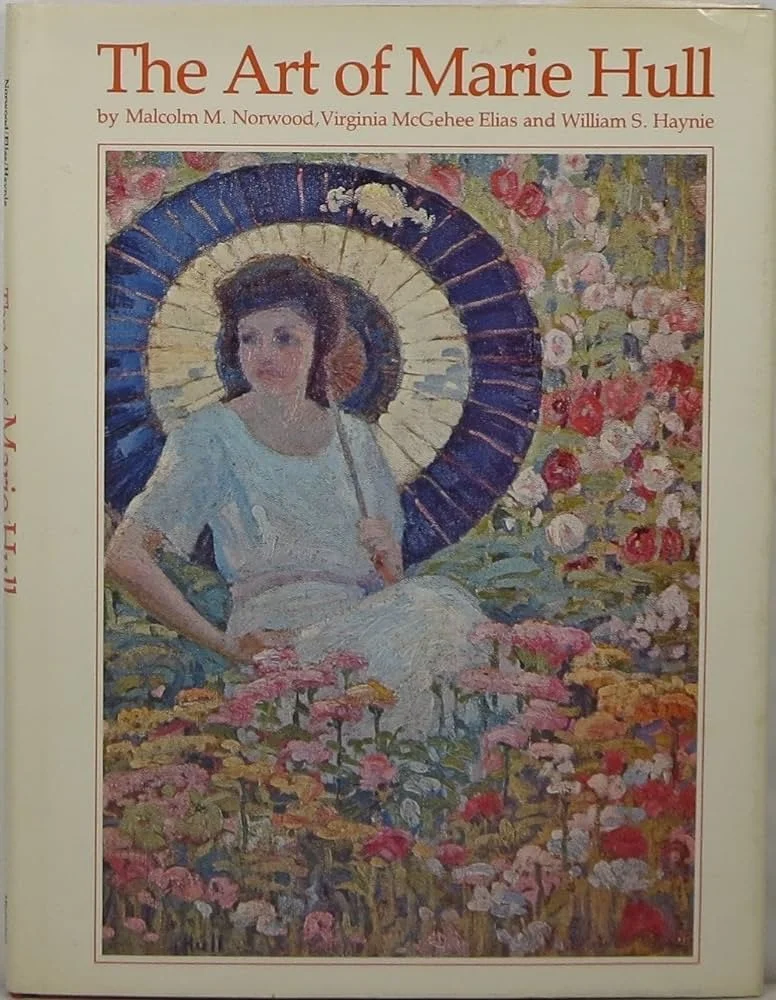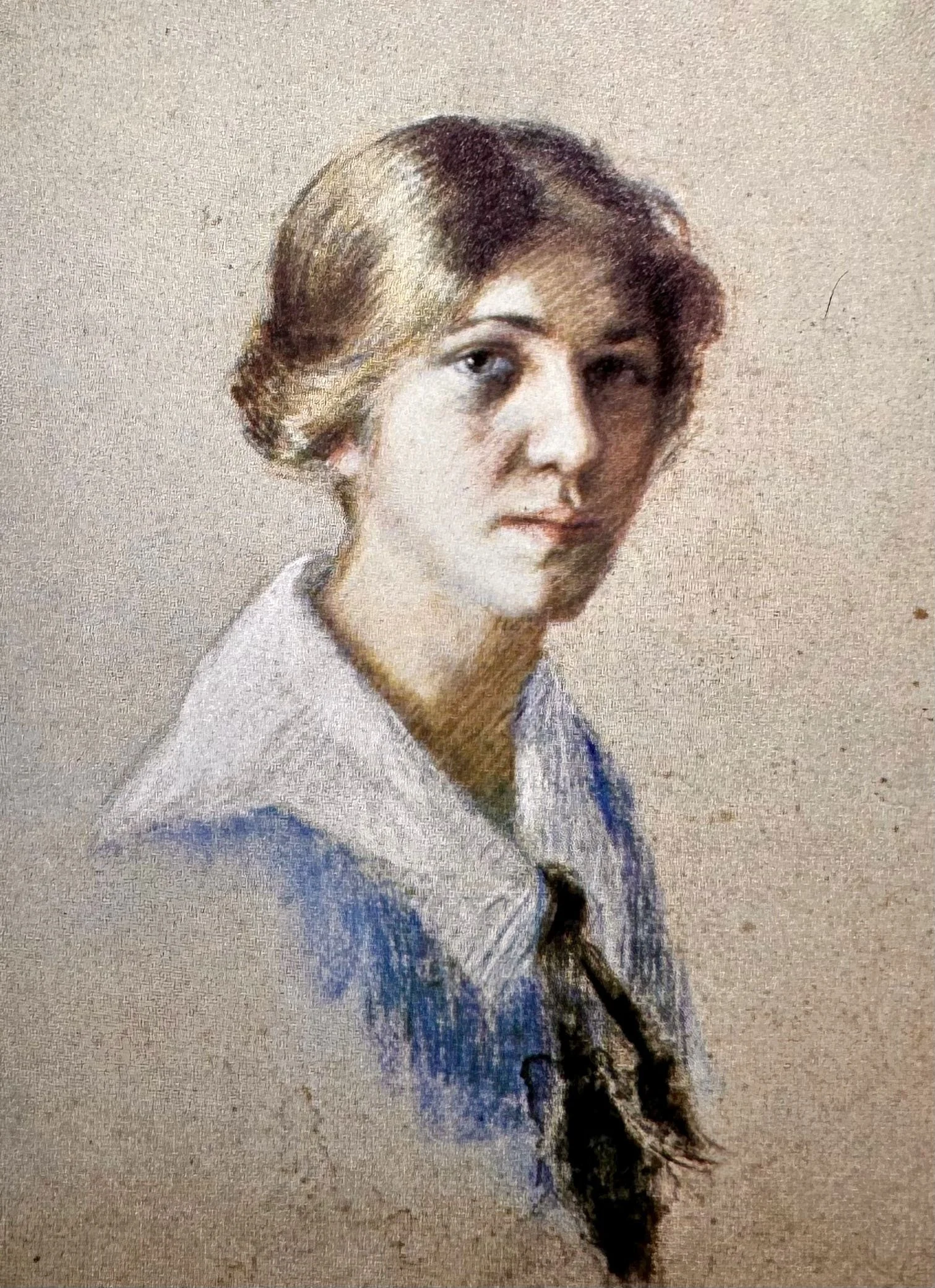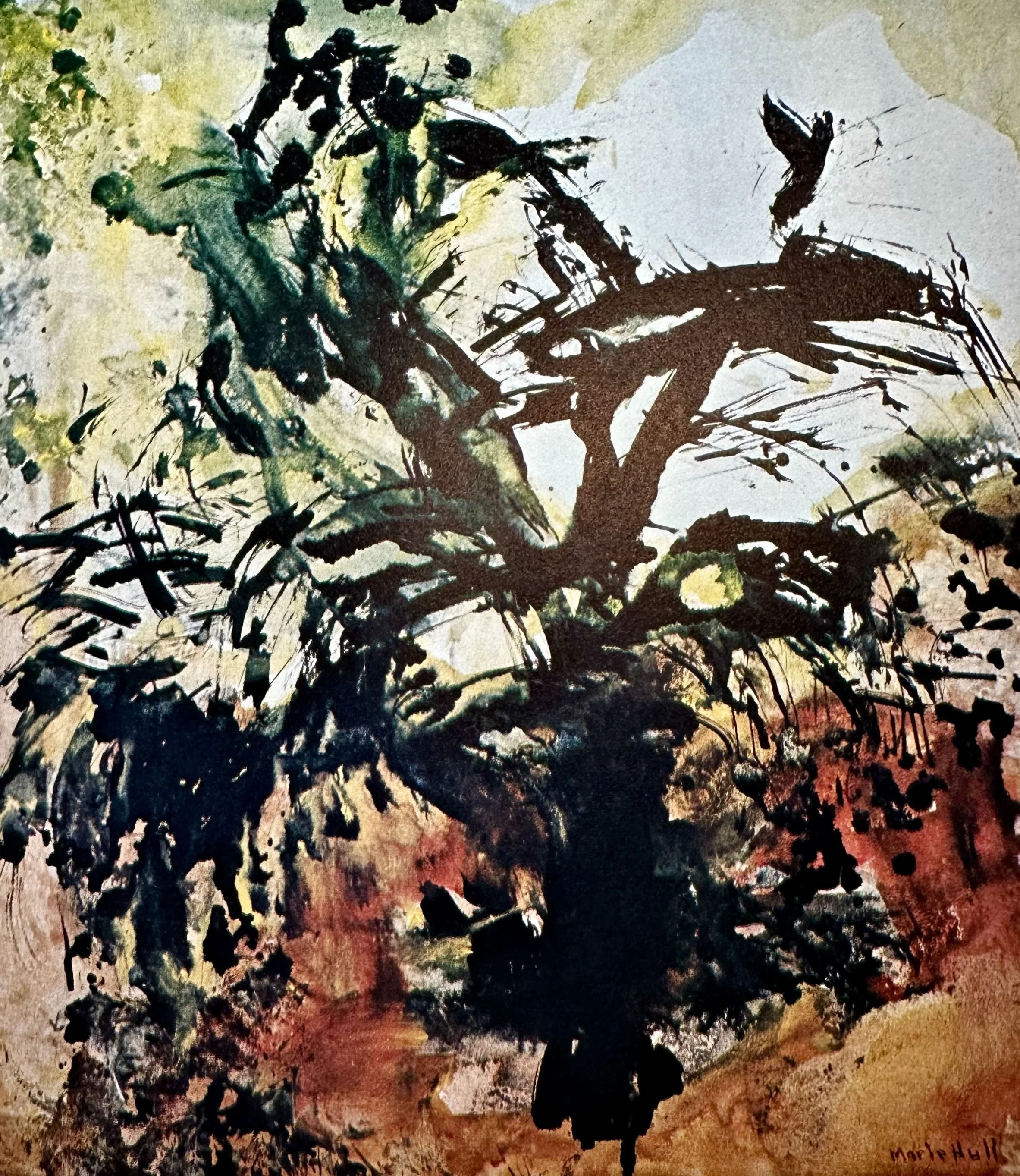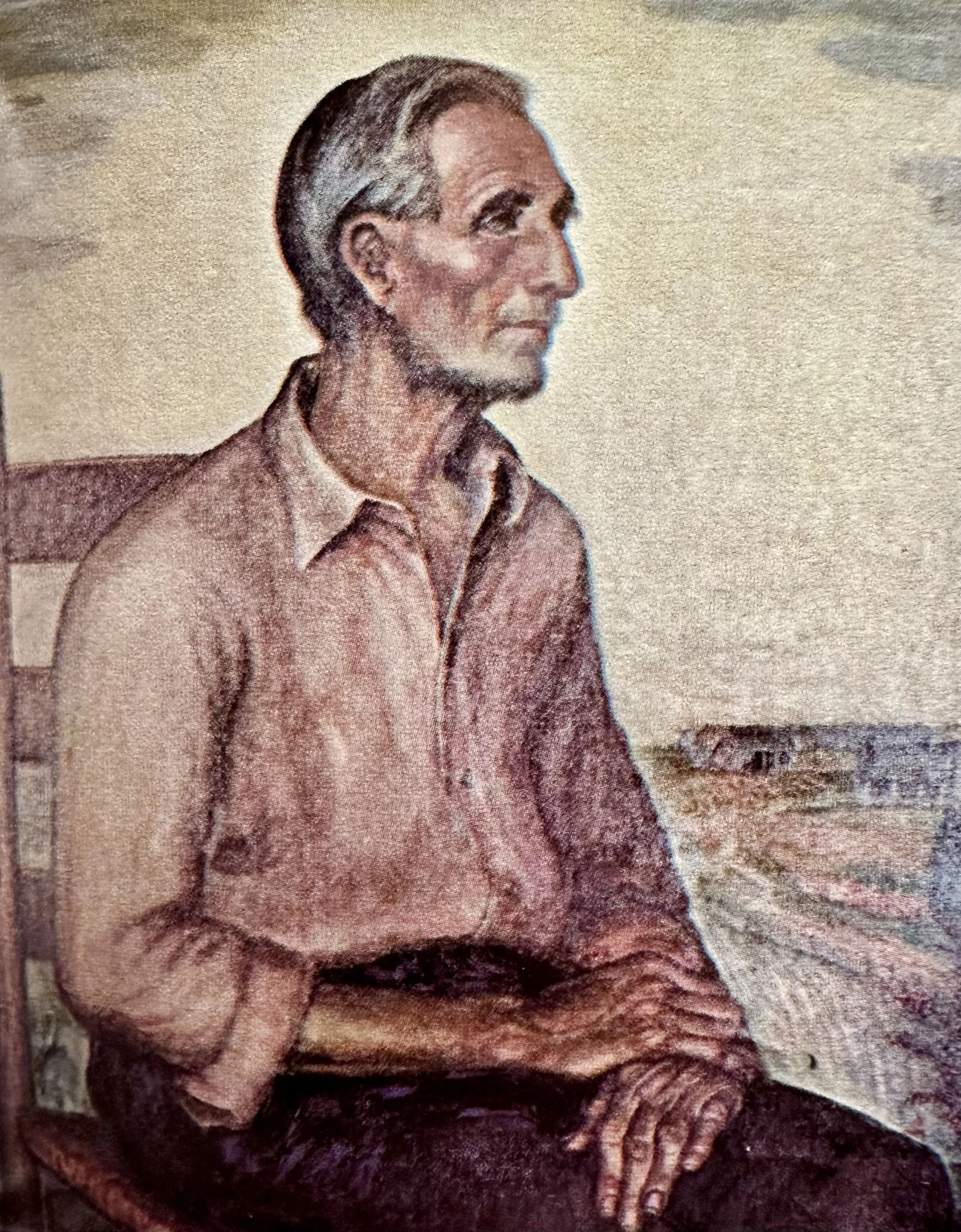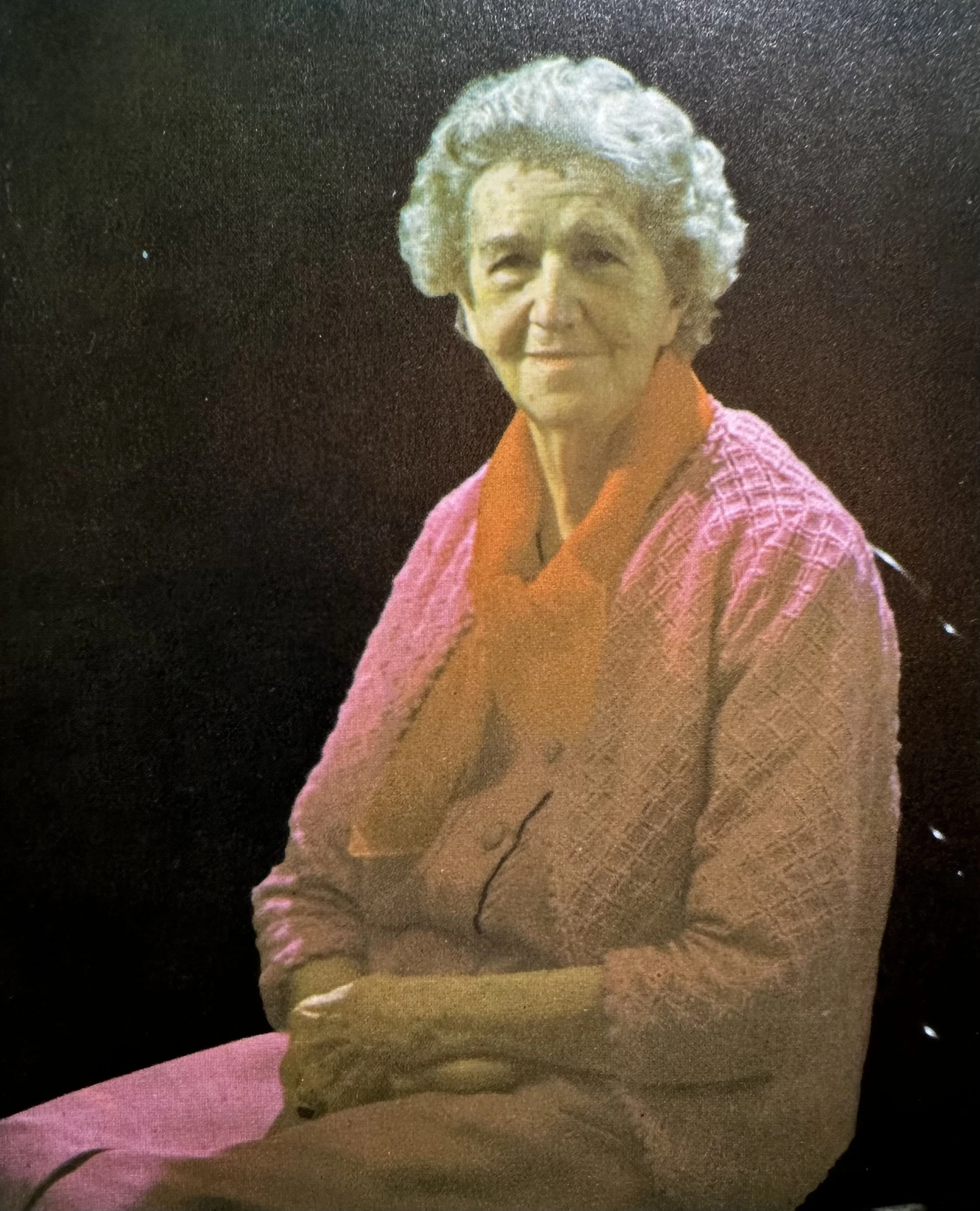I just published a new YouTube video for May. I reviewed a wonderful book I found in our local library, The Art of Marie Hull, published in 1975 to accompany a retrospective of her work held at Delta State University. It’s a thin little hardbound book only about 92 pages or so and sadly out of print (and expensive as all get out online.) I had ever heard of Marie Hull and picked it up on a whim as I was there taking Allie to see what sort of books she could get to read this summer.
The art section at the Noxubee County Library is not extensive but there’s a decent section so I’ve been picking up books here and there to look at and maybe inspire my practice this summer. The Art of Marie Hull was an enjoyable little gem and the story of Mrs. Hull reads like a true bohemian artist story if ever there was one. A lady who was a lifelong student of art, uninterested in becoming a famous artist, just a good one.
Guy Northrop, art editor of the Commercial Appeal once described Marie Hull as, "Painting like a young hellion who is seeing everything for the first time and simply has to shout about beauty." Other critics said she painted like a man, she was bold in her use of color and her paintings have a vitality and forwardness you don’t see in the subtle hand of women’s paintings from the time. Marie loved brilliant blues and greens and her favorite color was pink. But not just one shade of pink, her use of pink ranged from the most subtle of blush to a brilliant dark fushia that was almost red. Marie was prolific and persevered through the Depression and the war years. As well as succeeding at a time when women artists were few and far between. And people taking a female artist seriously? Even rarer. But through it all she stayed true to who she was and her standard of artistic and personal integrity.
Born in Summit, MS on September 28, 1890, as Marie Atkinson. Summit is a small town in Pike County north of McComb, MS right off Hwy 55. Her parents Ernest and Mary Atkinson loved music and introduced music to her at an early age. She took piano lessons all through her school years but no art or drawing classes as they were not offered at her elementary or high school. No one else in the family had artistic leanings aside from music so it was something a young Marie was never exposed to. It wouldn't be until her 20s that she discovered her passion for art.
The only known self portrait we have of Marie Hull
She attended Bellhaven College in Jackson and studied music becoming a piano teacher after graduating in 1909. She started taking private art lessons in 1910 and for two years she studied with Aileen Phillips who trained at the Philadelphia Academy of Fine Arts. Marie was one of the founding members of the Mississippi Art Association in 1911. When Aileen moved to New Mexico she encouraged Marie to study further which inspired her to attend the Philadelphia Academy of Fine Arts too. The Pennsylvania Academy of Fine Arts was the first art school in the US and at the time had the reputation for being the best art school in the country.
After a year in Philadelphia, she returned to Mississippi taking a position at Hillman College which later merged with Mississippi College in Clinton. She taught art there from 1913 to 1914 and taught art in her home to a small group of private students as well. Marie was a gifted teacher and taught probably hundreds of students over the years many of which became lifelong friends.
She married Emmett Johnston Hull on July 28, 1917. He was a Jackson architect and she went to work in his office making architectural renderings of the buildings he designed. He in turn encouraged her painting.
“Great Tree”
She continued to study art after she married and spent two summers in Colorado at the Colorado Springs Arts Center studying landscape painting. In 1922 she went to New York to the Arts Students League and studied with Frank Vincent Dumond one of the best anatomy teachers in the country at that time. While there she drew the face 8 hours a day for two months.
She and her husband traveled and lived in many parts of the US. In 1925 they took an extended vacation by car to the Southwest, West Coast, and Northwest. Marie painted studies of the landscapes and her husband studied the architecture of the areas they visited. They also lived for a while in Florida and North Carolina. One of her paintings during their time in the Southwest of yucca flowers won $2500 for placing 2nd in a painting competition held by the Texas Wild Flower Painting Competition. With this money, she financed a trip to Europe in May of 1929 with a group of other painters and artists led by George Elmer Browne.
Marie Hull’s 2nd place painting of Yucca Flowers
This group consisted of forty professional artists from all over the US. Browne was a teacher, lecturer, and guide who had lived 16 years in Europe. During that time he had taken twenty-three trips around the continent. Mrs. Hull took both classes offered on the trip - landscapes in the morning and figure drawing in the afternoons. While there they also visited museums listening to Browne lecture. She painted one hundred large to medium-sized paintings, 50 small ones, and 500 or 600 small watercolor paintings. She spent two weeks observing and studying in Prado, Spain, two weeks in the Louvre in Paris, and also visited many other museums in France and Spain. One of her paintings was shown in the 1931 Spring Salon in Paris - it was the only juried exhibition open at the time.
Her husband had planned to join her but due to the financial crash in 1929, he decided to stay home and not spend the money to travel to Europe knowing there would be few new building projects for several years. He urged his wife to remain in Europe to study as she might never have this opportunity again. This indeed was the only trip Marie ever made to Europe. She always wanted to go again but never made the trip.
Marie returned to New York in December of 1929 and saw more exhibitions by some of the better-known modern artists. While she found them interesting she also found them strange because she didn't understand them.
Marie continued to use her juried show awards and commissions to travel and see exhibitions across the country as time and finances allowed. She traveled to Chicago, New York, Canada, Colorado, and anywhere in between she saw an interesting exhibition. If she couldn't travel to see an exhibition she would order the exhibition catalogue to study. Marie often traveled by train or bus with just enough money to get by and a box lunch so she wouldn’t have to spend money at restaurants. She said she did this because she didn’t want to get robbed. Once when she was in Kansas City she had miscalculated and ran out of money. She walked into a local bank and asked to see the bank president. She introduced herself and said that the man could call the president of her local bank and the governor of Mississippi, that they would vouch for her. He did and when they said she was good for the money he asked her how much she needed. She replied, oh $5.00 or so should see me through. She just needed some money to eat on as she had a roundtrip ticket for the train.
Her trips kept her fresh and alive. She worked with many different mediums - sculpture, lithography, etching, silk screen printing, and woodblock printing. She was among the first to paint with commercially produced Casein, a milk-based paint that had been around for centuries but only became available commercially in the early 1900s. Marie was well known for her expressive use of color. It is a consistent characteristic of her work starting in the 1920s and going forward. Never one to categorize her work into a single specific style or category Marie Hull's work can still be divided into three main divisions: traditional, transitional, and contemporary.
“The Egg Man”
During 1930 to 1940 during the Depression Era, Mrs. Hull continued to paint and teach students. She often took payments in chickens, butter, and eggs in lieu of money during this time. It was a hard time to be an artist but Marie continued to hone her craft. Since there were few portrait commissions during this time she used local sharecroppers as models. Many farmers and sharecroppers had moved to Jackson to find work after being flooded out of their homes by the great flood of 1927. Mrs. Hull was able to hire them as models for modest fees and often they were people she already knew. These paintings were shown at major exhibitions and were thought to be some of her finest work to that date. One was displayed at the Golden Gate Exposition in San Francisco in 1939 and the other was shown at the World's Fair in New York in 1939. Marie was the only person invited from Mississippi to show at the Golden Gate Exposition and she was only one of 90 women to show at the World’s Fair where there was a total of over 1000 paintings exhibited.
Sharecroppers
She said about the sharecropper paintings, "They were, I think, among the finest things I've ever done, but I was doing them for quality, not for sentimental appeal." The subjects of these paintings were people that Marie knew very well. They were people who worked in and around her home. They were people she saw daily and she showed a deep understanding of her subjects that spoke to anyone who saw them.
“Burning Off”
These paintings found their way into prominent collections and museums throughout the country such as the Maureen O'Hara Collection in California, the Mississippi Arts League in Jackson, MS, the Lauren Rogers Museum in Laurel, MS, The Wright Art Center at Delta State University in Cleveland, MS, and the Johnson Collection in Spartanburg, SC. As well as being purchased by private collectors all over the country.
Mrs. Hull in her 80s
In 1977 Hull fractured her hip and had to leave her home and move into a nursing home. Even after moving to the nursing home, she continued the pursuit of her art adventure. Up until a few weeks before her death at age 90, she still painted daily. Marie Atkinson Hull passed away on November 21, 1980.
“Red Clay” Part of one of the last series of paintings she works on
“Lady with a Parasol”
Thanks for reading! If you liked this let me know! I have so many other art books that I love I would be glad to share those with you. Have a great week!
